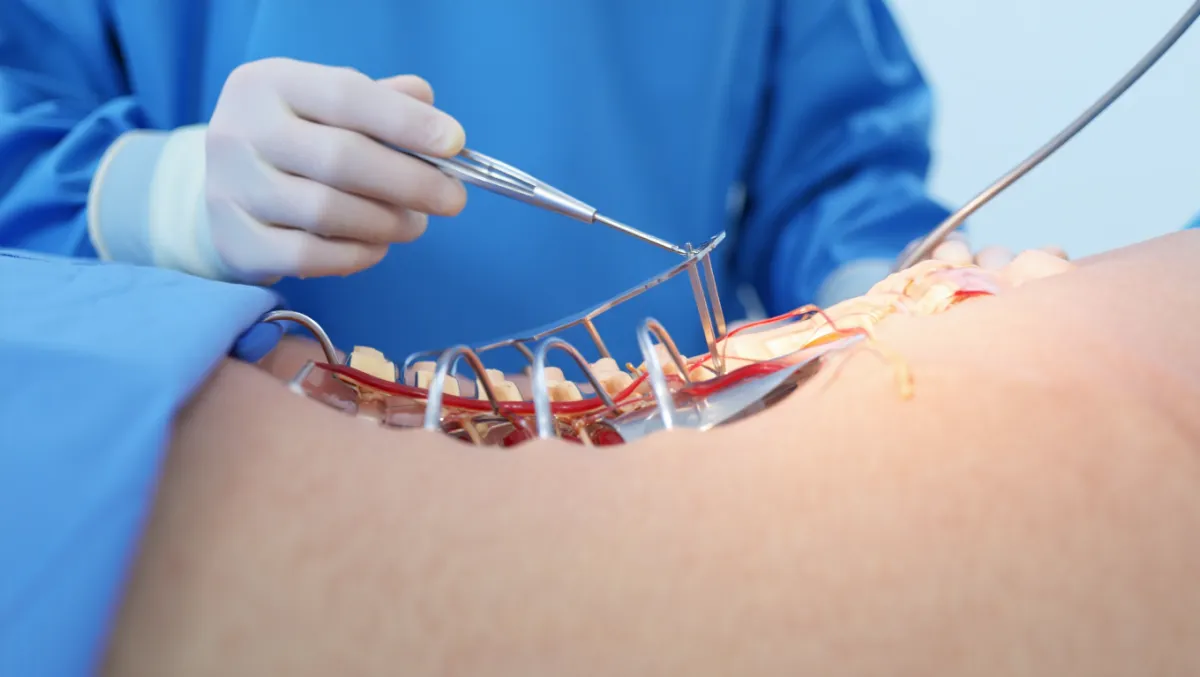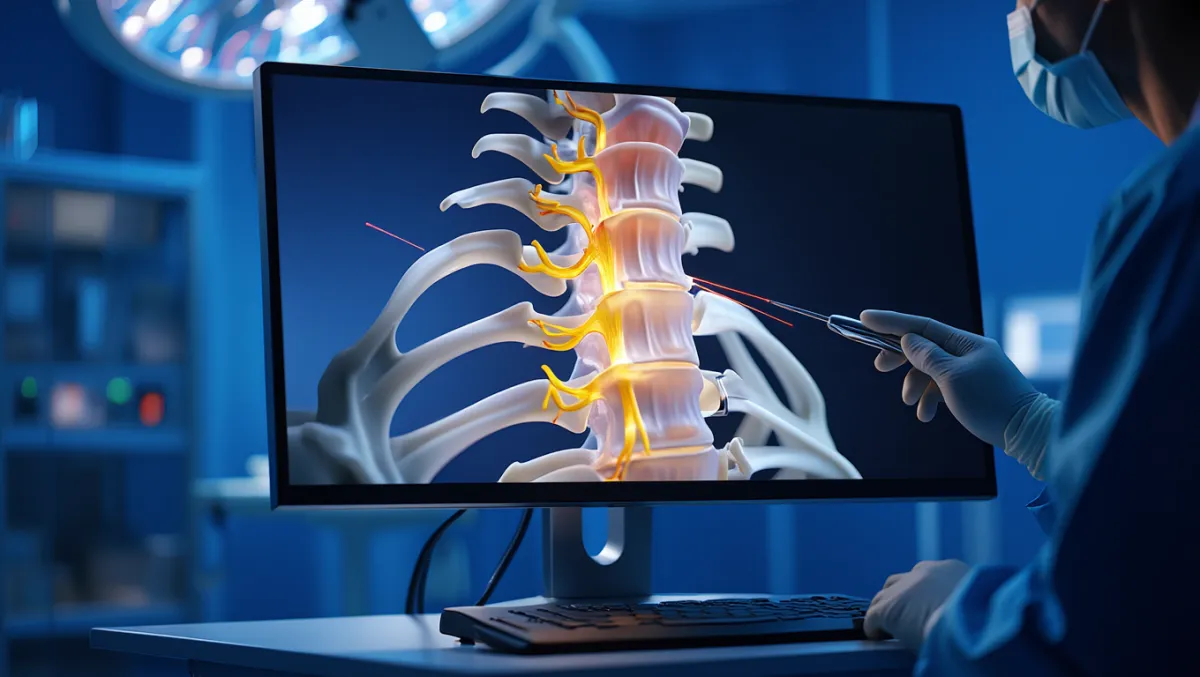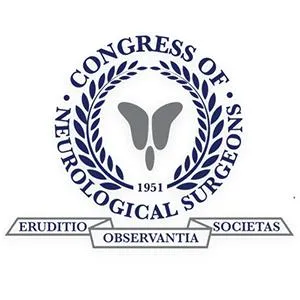Spine Surgery
Minimally Invasive Surgery (MIS)
Advanced Spine Surgery with Faster Recovery
At Desert Spine and Pain, we specialize in minimally invasive spine surgery (MIS) — techniques that achieve the same goals as traditional open surgery but with smaller incisions, less muscle disruption, and quicker recovery. Led by nationally recognized neurosurgeon Dr. David L. Greenwald, M.D., FAANS, FACS, our Phoenix team offers patients the highest level of MIS expertise, using precision tools, navigation systems, and microsurgical techniques.

Over 100 5-Star Reviews!

Types of Minimally Invasive Spine Surgery

Extreme Lateral Interbody Fusion (XLIF)

Interlaminar Lumbar Interbody Fusion (ILIF)

Microdiscectomy

Minimally Invasive Intradiscal Procedures

Sacroiliac (SI) Fusion

Transforaminal Lumbar Interbody Fusion (TLIF)
What Is Minimally Invasive Spine Surgery?
In simple terms, MIS lets us fix spinal problems through tiny openings instead of large incisions. Scientifically, MIS uses tubular retractors, endoscopes, or microscopes to reach the spine with minimal disruption of paraspinal muscles and ligaments. This lowers the inflammatory response, blood loss, and postoperative pain, while achieving equivalent decompression or stabilization outcomes.
Minimally Invasive Spinal Procedures
Extreme Lateral Interbody Fusion (XLIF)
Minimally Invasive Extreme Lateral Interbody Fusion (XLIF) is an advanced type of spinal fusion surgery used to treat conditions such as degenerative disc disease, spondylolisthesis, scoliosis, and nerve compression in the lower back. Unlike traditional approaches that enter from the front or back, XLIF is performed through the patient’s side, avoiding large muscles and minimizing tissue disruption.
This side approach allows neurosurgeons like Dr. David Greenwald, M.D., FAANS, FACS at Desert Spine and Pain to stabilize the spine, decompress nerves, and restore disc height using smaller incisions and faster recovery times.
Interlaminar Lumbar Interbody Fusion (ILIF)
Minimally Invasive Interlaminar Lumbar Interbody Fusion (ILIF) is an advanced spinal fusion technique designed to relieve nerve compression and stabilize the lower back through a small incision between the natural spaces of the spine (interlaminar window). Unlike traditional open fusion surgeries, ILIF preserves surrounding muscles and ligaments while allowing direct access to the damaged disc. During the procedure, Dr. David Greenwald carefully removes the diseased disc, places an interbody spacer filled with bone graft, and stabilizes the spine with specialized instrumentation—all through a minimally invasive approach.
This technique is ideal for patients with degenerative disc disease, spinal stenosis, or spondylolisthesis, offering the benefits of reduced blood loss, less postoperative pain, and faster recovery. At Desert Spine and Pain, ILIF is performed using microsurgical precision and real-time imaging, helping patients return to normal activity sooner with lasting pain relief and restored spinal stability.
Laminectomy
Minimally Invasive Laminectomy (MIS Laminectomy) is a surgical procedure that relieves pressure on the spinal cord or nerves caused by spinal stenosis, herniated discs, or bone overgrowth. Unlike traditional open surgery, this technique uses small incisions and tubular retractors to gently separate—rather than cut—back muscles, allowing direct access to the spine with less tissue disruption. During the procedure, Dr. David Greenwald removes a small portion of the lamina (the bony arch covering the spinal canal) and any bone spurs or thickened ligaments pressing on the nerves.
At Desert Spine and Pain, the MIS approach results in less postoperative pain, minimal scarring, and faster recovery compared to traditional methods. Most patients experience significant improvement in leg or back pain, are able to walk within hours, and return home the same day or after a short hospital stay. This advanced technique combines neurosurgical precision and modern technology to restore comfort, mobility, and quality of life.
Foraminotomy
Minimally Invasive Foraminotomy (MIS Foraminotomy) is a precise surgical procedure that relieves pressure on spinal nerves by widening the foramen—the small openings where nerves exit the spinal canal. When these spaces become narrowed due to herniated discs, bone spurs, or degenerative arthritis, nerves can become pinched, leading to pain, numbness, or weakness that radiates into the arms or legs.
At Desert Spine and Pain, Dr. David Greenwald performs MIS foraminotomies through tiny incisions using tubular retractors and an operating microscope or endoscope, preserving surrounding muscles and tissues. The procedure removes only the small portions of bone or disc material compressing the nerve, providing relief with minimal trauma. Patients typically experience less pain, smaller scars, and quicker recovery, often returning home the same day and resuming light activities within a few days.
Microdiscectomy
Microdiscectomy is a minimally invasive spinal surgery designed to relieve pressure on a nerve root caused by a herniated or bulging disc. When part of a spinal disc presses on a nearby nerve, it can cause severe leg or arm pain (often called sciatica or radiculopathy), numbness, or weakness. During the procedure, Dr. David Greenwald makes a small incision and uses a surgical microscope to precisely remove only the portion of the disc that is compressing the nerve—preserving as much of the healthy disc as possible.
At Desert Spine and Pain, microdiscectomy is performed using state-of-the-art microsurgical tools and fluoroscopic guidance, minimizing tissue disruption and speeding recovery. Most patients notice immediate relief of nerve pain, can walk within hours, and return home the same day. Compared to traditional open surgery, this approach offers less pain, smaller incisions, and faster return to normal activity, making it one of the most effective procedures for treating lumbar disc herniation.
Minimally Invasive Intradiscal Procedures
Minimally Invasive Intradiscal Procedures are advanced treatments designed to relieve pain originating from within a damaged or degenerated spinal disc—without the need for open surgery. These techniques target the disc itself to reduce pressure, inflammation, or nerve irritation caused by herniation, annular tears, or degeneration. Depending on the patient’s condition, procedures may include intradiscal electrothermal therapy (IDET), percutaneous discectomy, intradiscal PRP injections, or biologic therapies that promote healing within the disc.
At Desert Spine and Pain, Dr. David Greenwald performs these treatments using fluoroscopic (X-ray) or endoscopic guidance, allowing precise access through a needle or micro-incision. The goal is to preserve the natural disc while reducing pain and restoring function. Most patients go home the same day, experience less downtime and faster recovery than with traditional spine surgery, and benefit from a comprehensive, minimally invasive approach to managing chronic back pain at its source.
Sacroiliac Fusion (SI Fusion)
Minimally Invasive Sacroiliac Fusion (SI Fusion) is a specialized procedure that stabilizes the sacroiliac joint—the connection between the spine and pelvis—when it becomes painful or unstable due to degeneration, injury, or arthritis. Chronic SI joint pain often causes aching or sharp discomfort in the lower back, buttocks, or hips, sometimes mimicking sciatica.
At Desert Spine and Pain, Dr. David Greenwald performs SI fusion using a minimally invasive approach through a small incision near the buttock. Guided by live fluoroscopy and navigation technology, specialized implants are placed across the joint to restore stability and allow bone fusion. This approach minimizes muscle disruption and blood loss, resulting in less postoperative pain, smaller scars, and faster recovery than traditional open techniques. Most patients go home the same day and experience lasting relief as the joint fuses naturally over time, restoring strength and mobility.
Transforaminal Lumbar Interbody Fusion (TLIF)
Minimally Invasive Transforaminal Lumbar Interbody Fusion (MIS TLIF) is a modern spinal fusion procedure used to relieve pressure on spinal nerves and stabilize the lower back. It’s most often performed for conditions such as degenerative disc disease, spondylolisthesis, spinal stenosis, or recurrent disc herniation. Unlike traditional fusion surgery, MIS TLIF uses small incisions and tubular retractors to access the spine from one side of the back (the transforaminal corridor), minimizing muscle and tissue disruption.
During the procedure, Dr. David Greenwald removes the damaged disc, decompresses the affected nerves, and inserts an interbody cage filled with bone graft material between the vertebrae. Screws and rods are then placed through tiny incisions to stabilize the spine as the bone fuses naturally over time. At Desert Spine and Pain, this minimally invasive approach results in smaller scars, less blood loss, reduced postoperative pain, and a faster return to normal activities compared to traditional open fusion surgery. Most patients go home the next day and experience long-term improvement in back and leg pain.
Book a Consultation Today.
If you’ve been diagnosed with a spinal condition and want to explore minimally invasive surgical options, Dr. Greenwald and his caring team are here to help. We’ll perform a detailed evaluation, review your imaging, and discuss whether MIS is right for your specific needs. Every step you take toward advanced, patient-focused spine care brings you closer to lasting relief, mobility, and confidence. Schedule your consultation today and discover how Dr. Greenwald’s minimally invasive expertise can help you recover faster and live pain-free.


Dr. David L. Greenwald, M.D., F.A.C.S.
Neurosurgeon | Spine Surgeon | Regenerative Medicine
Dr. David L. Greenwald, MD, FACS, is a board-certified spine surgeon specializing in Minimally Invasive Spine Surgery (MIS), an advanced approach that treats spinal conditions through small incisions with minimal disruption to muscles and surrounding tissues. Using cutting-edge technology and precision-guided instruments, Dr. Greenwald performs procedures such as microdiscectomy, decompression, and fusion with reduced blood loss, less postoperative pain, and faster recovery compared to traditional open surgery. His expertise allows patients throughout South Florida to experience excellent outcomes and return to normal activities more quickly—often with less need for hospitalization and shorter rehabilitation times.
The MIS Process: Step by Step

Anesthesia & Positioning
General anesthesia; careful positioning to protect nerves.

Small incision & retractor placement
A tubular retractor dilates muscle fibers rather than cutting them.

Microscopic or endoscopic visualization
Ensures precision and safety.

Targeted surgery
Disc removal, decompression, or fusion performed through the corridor.

Closure
Small incision closed with sutures or glue.

Recovery
Many patients walk the same day.
Minimally Invasive Spine Surgery Guide
Our recommendations are customized to your diagnosis and goals and our first priority is your recovery. Because minimally invasive procedures have a much quicker recovery time, Desert Spine and Pain always looks at MIS procedures as a first potential treatment when surgery is required. Here's a little more about our minimally invasive surgery process.

Benefits of MIS Over Traditional Surgery
Smaller incisions (1–2 inches vs. 4–6 inches)
Less blood loss and tissue trauma
Shorter hospital stays (often outpatient or 1 night)
Faster return to work and daily activities
Lower infection risk
Reduced postoperative pain and narcotic use

Conditions Treated with MIS
Herniated Disc – Removal of disc fragments pressing on nerves
Spinal Stenosis – Widening of the spinal canal or foramina
Spondylolisthesis – Stabilization with fusion
Degenerative Disc Disease – Fusion or disc replacement in advanced cases
Spinal Fractures – Stabilization procedures

Why Choose Desert Spine and Pain?
Nationally recognized MIS expertise – Dr. Greenwald is a neurosurgeon specializing in advanced minimally invasive techniques.
Comprehensive options – From conservative care to MIS and fusion, we provide the full spectrum.
Patient-focused philosophy – Smaller incisions mean faster recovery and less fear of surgery.
Proven outcomes – High success rates for disc herniations, stenosis, and instability.
Recovery Timeline

Day 0
Most patients stand and walk within hours.

1–2 weeks
Return to light activity and desk work.

6 weeks
Most resume driving, light exercise, and daily routines.

3–6 months
Return to higher-impact activities (depending on procedure type).

Fusion procedures
Full bone healing may take 6–12 months.
Frequently Asked Questions
Is minimally invasive surgery as safe as open surgery?
Yes. In expert hands, MIS achieves the same results with lower risk of complications like infection and blood loss.
How do I know if I qualify for MIS?
Most patients with disc herniation, stenosis, or low-grade instability are candidates. Complex deformities may still require open surgery.
How long will I stay in the hospital?
Many MIS procedures are outpatient or involve a 1-night stay. Fusion surgeries may require 1–3 days.
Does MIS mean no pain after surgery?
No surgery is pain-free, but MIS usually means less pain, less narcotic use, and faster return to activity.
How does Desert Spine and Pain perform MIS differently?
We combine neurosurgical precision, advanced technology, and compassionate care to deliver world-class outcomes in Phoenix.
Book your Spine Care Consultation Today!


Desert Spine and Pain
Patient Centered & Partner Focused
Quick Links
Resources
Connect With Us
© Desert Spine and Pain. 2025. All Rights Reserved. Sitemap














